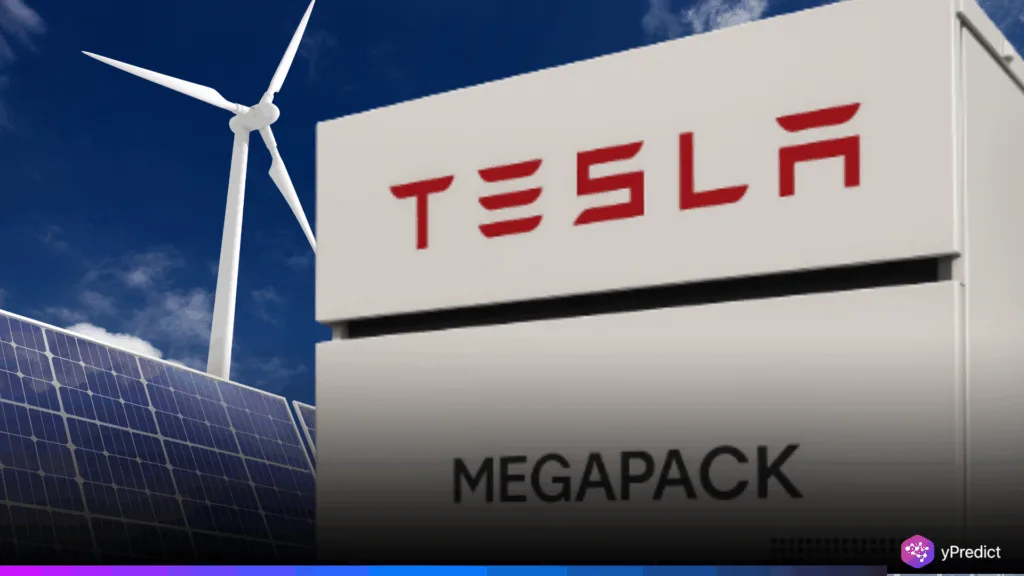
Tesla Megapack, a giant energy storage system, is once again in people’s focus. As the world consumes energy at an unprecedented level, especially due to the data centers operated by AI. As we maintain the rate of artificial intelligence growth. The electricity usage of hyperscale facilities will have doubled by the year 2030. The grid-stabilizing and renewable energy-storage capacity of Megapack qualifies it to help this expansion. Tesla Megapack can deliver a vast capacity of 40 GWh annually. Addressing the growing demand for a steady and sustainable energy source in the growing tech setup.
AI-Driven Data Centers Are Transforming Global Power Demands
Artificial intelligence is fueling a surge in data center construction, with projections showing electricity usage could double worldwide by 2030. Leading sources, including the IEA and Goldman Sachs, highlight how AI workloads are accelerating power consumption. Large language models like ChatGPT require nearly ten times more energy than traditional search queries. This growth could push U.S. data centers to account for nearly half of the country’s electricity demand increase in the next five years. As infrastructure expands to support AI, continuous, high-density energy becomes critical, not just for computing but for operational stability.
Such data centers need reliable power sources that will be on even when there is an outage, fluctuation in the grid, or renewable outages to remain consistent in their performance. The storage of energy is no longer an optional part as it used to be; it is one of the main foundation stones in the infrastructure of AI. Megapack, the product of Tesla, comes in with an all-in-one solution: with a storage capacity of up to 3.9 MWh and a quick deployment time, one Megapack fits into this gap. Whether offsetting peak demand or enabling clean energy, the Megapack supports facilities in regions facing grid stress, offering scalable backup while aligning with sustainability goals in both public and private sectors.
Utility-Scale Energy Storage Now Vital for AI Infrastructure Growth
Energy storage systems like Megapack are not just stabilizing tools; they are enablers for the next generation of AI infrastructure. Data centers relying on solar or wind power often face intermittent energy availability. Megapack enables such facilities to dispatch extra renewable energy and draw on it when required. Thus providing a smoother supply to AI models that have to be continuously operated. The capacity to energize such data centers without wholly depending on fossil fuels is a strategic power, especially as the pressure on such facilities from the environment grows. The ability of Tesla Megapack to put in place a plant with 1 GWh capacity within less than 90 days is one of the reasons why the technology is appealing to fast-growing businesses.
Already, adoption is taking place. Supercomputer and cloud platform operators are using Megapacks to provide outage management, uptime, and enhanced energy economics. In the meantime, the signing of multi-gigawatt renewable energy contracts is an indication of the increasing future of Megapack within hybrid energy solutions. The size of the Tesla Megapack and its production efficiency allow the company to have an advantage in the ability to fulfill demand in any industry. With AI adoption expanding globally and electricity infrastructure lagging in many areas, Megapack offers a ready-made, grid-integrated solution tailored for this energy-intensive future.
AI and Energy Storage Are Now Deeply Interlinked
With the ongoing transformation of industries by AI, the infrastructure that sustains AI has to adapt at the same rate. Tesla Megapack covers one of the burning questions: how to supply stable, clean energy to power-intensive data IT centers. The energy storage is no longer an auxiliary component. As the demand for electricity to execute AI processes is projected to triple in the next decade. Megapack’s scalability, fast deployment, and compatibility with renewables make it uniquely suited to this task. Tesla’s energy division may soon become as essential to AI infrastructure as its automotive business is to electric mobility.






